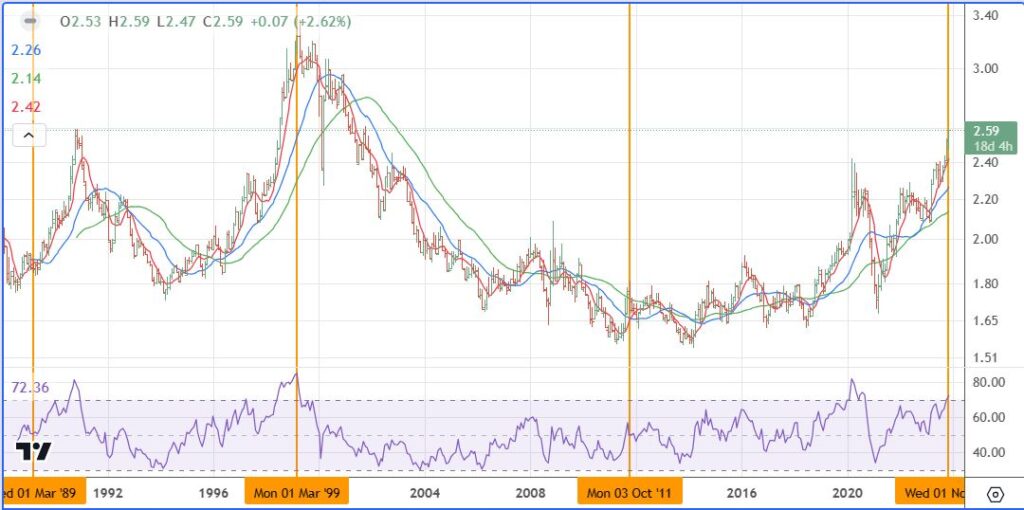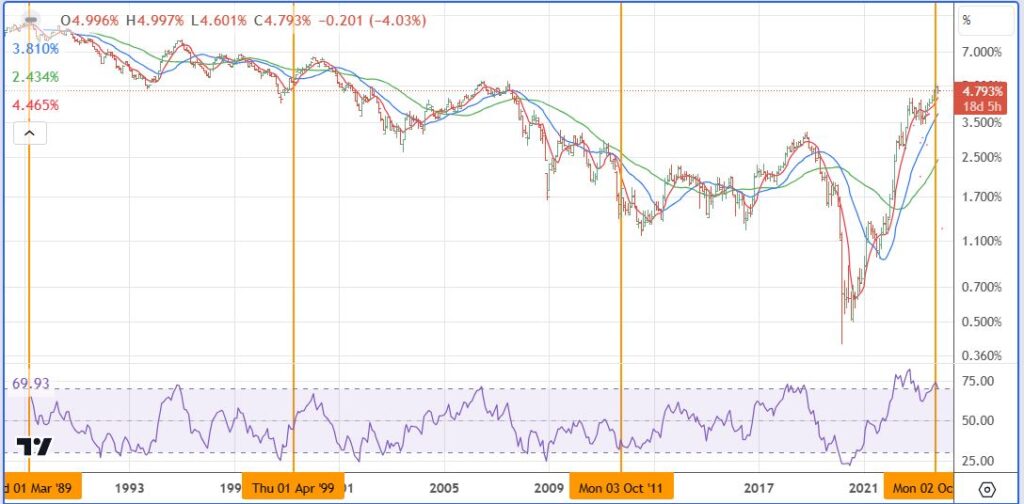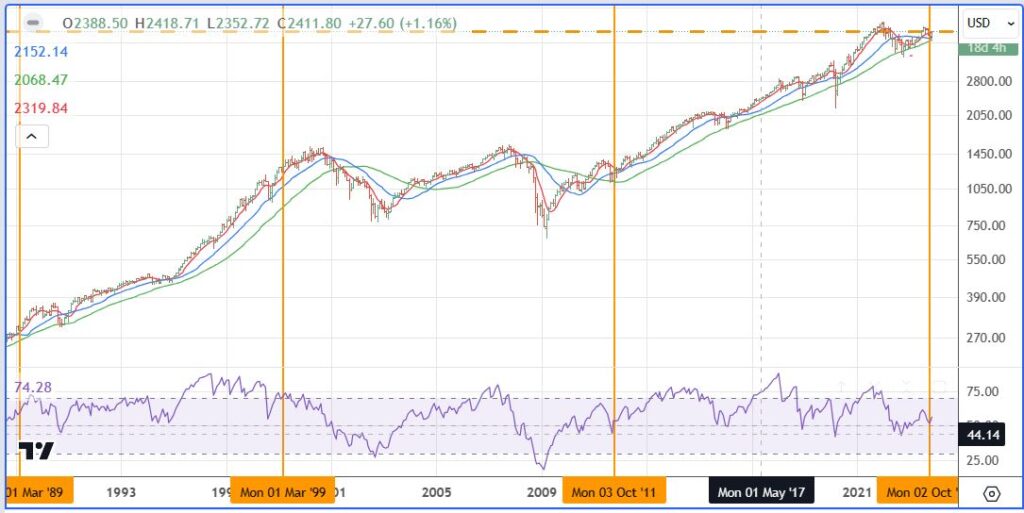It all Depends on Who is Telling the Story…
Are we in a bull market and are the small caps a real steal here?
Last week it looks a lot like equity investors were willing to buy everything based on the Fed pivot, but they’re still very skeptical about the direction of the global economy. I think that’s why we’ve seen some of the historical recovery trade leaders – small-caps, emerging markets, value stocks – really struggling here even though sentiment is supposedly very bullish over the past two weeks. It’s still possible we see a rally heading into the end of the year. If it does happen though, it sure looks unlikely that everyone will be along for the ride…
When one steps back and looks at what really is going on, it really appears that what is important is whose story you are believing.
- For months now it has felt weirdly as if life in the United States of America is playing out on a split screen. That sense is very strong tonight.
On one side is a country that in the past three years has invested in its people more completely than in any era since the 1960s. The American Rescue Plan, the Bipartisan Infrastructure Law, the CHIPS and Science Act, and the Inflation Reduction Act jump-started the U.S. economy after the devastation of the coronavirus pandemic; are rebuilding our roads, bridges, harbors, and internet infrastructure; have attracted $200 billion in private investment for chip manufacturing; and have invested billions in addressing the effects of climate change.
All of these changes need workers, and the economy emerged from the coronavirus pandemic with extraordinary growth that reached 4.9% in the last quarter and has seen record employment and dramatic wage gains. Median household wealth has grown by 37% since the pandemic, with wages growing faster at the bottom of the economy than at the top.
Yesterday, President Biden, in a buoyant mood, reflected this America when he congratulated members of the United Auto Workers in Belvidere, Illinois, for the strong contracts that came from negotiations with the nation’s three top automakers—Ford, Stellantis, and General Motors—thanks to the UAW workers’ 46-day graduated strike. The union demanded the automakers make up the ground that workers had ceded years ago when the plants were suffering.
The final contracts that emerged from long negotiations gave workers wage gains of 30% over the next four and a half years, better retirement security, more paid leave, commitments that automakers would create more union jobs, union coverage for workers at electric vehicle battery plants—the lack of that protection had been a key reason autoworkers had been skittish about electric vehicles—and a commitment from Stellantis to reopen the Jeep Cherokee plant in Belvidere that had been shuttered in February.
The UAW’s success is already affecting other automakers. As workers at non-union plants begin to explore unionization, Honda and Toyota have already announced wage hikes to match those in the new UAW contracts, and Subaru is hinting it will do the same.
Biden had worked hard to get the Belvidere plant reopened, and he joined the UAW picket line—the first president to do such a thing. He told the autoworkers that he ran for the presidency “to…bring back good-paying jobs that you can raise a family on, whether or not you went to college, and give working families more breathing room. And the way to do that is to invest in ourselves again, invest in America, invest in American workers. And that’s exactly what we’ve done.”
In Belvidere, Biden and UAW president Shawn Fain cut a selfie video. In it, Biden says: “[Y]ou know, the middle class built this country, but unions built the middle class. And when unions do well, everybody does well. The economy does well.” Fain adds: “And this is what happens when working class people come together and stand together. Stand united. You know, one of the best things I’ve ever seen in my life was seeing a sitting U.S. president visit striking workers on the picket line. That goes a long way for showing where this president stands with working-class people.” Biden says: “Well, I want to tell you, from where I stood, you did a hell of a job, pal.” Fain answers: “Yep. Back at you.”
In contrast to this optimistic can-do vision that is making American lives better is the other side of the screen: that of former president Trump and the MAGA Republicans who have doubled down on supporting him.
In Ohio, after voters on Tuesday approved an amendment to the state constitution protecting abortion rights, Republicans are calling the amendment “ambiguous” and trying to remove it from the jurisdiction of the courts. They want to make the legislature—which they dominate thanks to gerrymandering—the only body that can decide what the measure means. They are openly trying to override the decision of the voters.
In Washington, Republicans have empowered Christian extremist Mike Johnson (R-LA) to lead the House of Representatives as speaker, and today we learned that outside his office he displays a flag associated with the New Apostolic Reformation (NAR) network that wants to place the United States government under the control of right-wing Christians. On January 6, 2021, rioters took these flags with them into the U.S. Capitol.
Johnson is also associated with a right-wing movement to call a convention of states to rewrite the Constitution.
In The Bulwark on Wednesday, A. B. Stoddard noted that the Republican Party’s surrender to its MAGA wing is nearly complete. Today, Representative Elise Stefanik (R-NY), who is the third most powerful Republican in the House, illustrated that capitulation when she filed a five-page letter to the New York State Commission on Judicial Conduct. Stefanik’s letter drew on an article from the right-wing Breitbart media outlet to accuse Judge Arthur Engoron and his principal law clerk of being partisan operatives. Engoron is presiding over the New York fraud trial of former president Trump and the Trump Organization.
Legal analyst Lisa Rubin noted that Stefanik’s position as a member of Congress shields her from Freedom of Information Act requests, meaning that journalists will be unable to uncover whether members of Trump’s legal defense worked with her to produce the letter. And while the mistrial motion that observers like Rubin expected to see Trump defenders produce could be dismissed quickly by Engoron himself, a complaint to the state’s judicial conduct commission will hang out there until the commission meets again.
Undermining their opponents through accusations of impropriety has been a mainstay of the Republicans since the 1990s, and it is a tactic Trump likes to use. In this case, it illustrates that Stefanik, an official who swore to defend the Constitution, has abandoned the defense of our legal system and is instead embracing Trump’s efforts to tear it down.
Meanwhile, the inability of the Republicans to figure out a way to fund the government has led the credit-rating agency Moody’s to downgrade the outlook for the credit rating of the United States today from “stable” to “negative.” Moody’s expressed concern about the fight over the debt limit last spring, the removal of House speaker Kevin McCarthy (R-CA), and the rising threat of a government shutdown.
All of this plays into the hands of former president Donald Trump, who is eager to return to the White House. From there, he promises, he will take revenge on those he thinks have wronged him.
John Hendrickson of The Atlantic was at Trump’s political rally in Hialeah, Florida, on Wednesday, where the former president railed against those “coming into our country,” people he compared to “Hannibal Lecter,” a fictional serial killer who ate his victims. Trump said that under Biden, the U.S. has become “the dumping ground of the world,” and he attacked the “liars and leeches” who have been “sucking the life and blood” out of the country. He also attacked the “rotten, corrupt, and tyrannical establishment” of Washington, D.C.
Hendrickson called it a “dystopian, at times gothic speech [that] droned on for nearly 90 minutes.”
It was a sharp contrast to Biden’s speech in Belvidere.
“We have more to do, but we’re finally building an economy that works for the people—working people, the middle class—and, as a consequence, the entire country,” Biden said. “When I look out at all of you and the communities like Belvidere, I see real heroes of your story—you know, you and the American worker, you’re the American people. “Because of you, I can honestly say—and I mean this from the bottom of my heart—I’ve never been more optimistic about America’s future than I am today…
On the other hand, Donald Trump often says…, ‘We are now a failing nation. We’re a nation in decline.’” “But that’s not what I see,” Biden said. “I know this country. I know what we can do if folks are given half a chance. That’s why I’m so optimistic about our future. We just have to remember who we are. We are the United States of America. There is nothing beyond our capacity if we work together.”
The bear story is however very alive, with the last wave coming in since July 23, 2023.
This is the Wall Street bearish crowd story. This is the crowd that has missed the whole rally since June 2022 and are not giving up. They have a lot of money and are focused on the deficit and the effect it will have on interest rates and the markets.
This brings me to my point, the way the market has forced the non-believers into buying the safe mega-stocks and ignoring the small caps. History shows that the gulf between small and big caps is largely a psychology thing. My belief remains that in the end, the small caps are the place to be for the real bull market. Here are three charts going back to 1989, kind of embracing the period after the 1987 crash.:
- The first is the SPX/RUT relationship. Here you see three times when the SPX has been strong vs the RUT, October 1990, March 1999 and Oct 2023. To put things in perspective, the time, October 2011 when SPX was down against the RUT, is when Bernanke panicked and put QE in place, we don’t have the picture now, just the opposite.

2. The second is the average interest rate chart (30Y+10Y+5Y+2Y) for the same period. The pattern here does not seem to have much correlation with the SPX/RUT relationship chart above. Rates basically went down until March 2020 and are now back up to more normal rate levels.

3. The third chart is for the S&P 500 chart using the logarithmic basis that puts percentage changes in focus. This chart basically with the exception of 2001 and 2009, goes up, not much correlation to small and mega caps relationships.

Summary in this brief history lesson: Looking out three years from the following dates and ignoring the Covid whipsaw in 2020 (easier to make the argument).
- From March 1989: SPX up 37%; RUT up 29%
- From March 1999: SPX down 11 %; RUT up 27%
- From October 2011: SPX up 61 %; RUT up 58 %
- From October 2023: SPX ???? RUT ????
While both the SPX and RUT should move higher over the next three years it would appear the bigger risk at this point is owning the large caps.
Leave a Reply